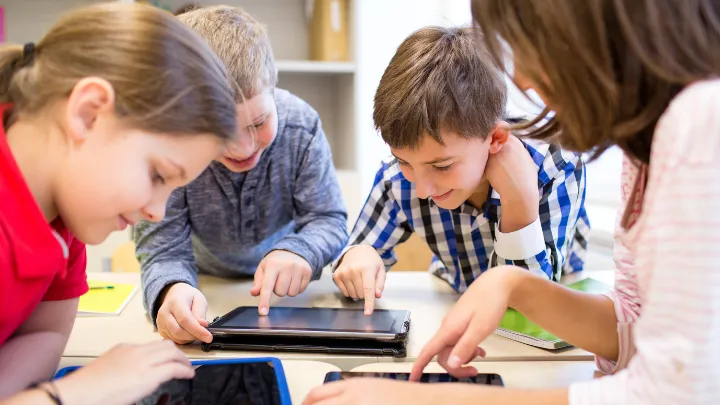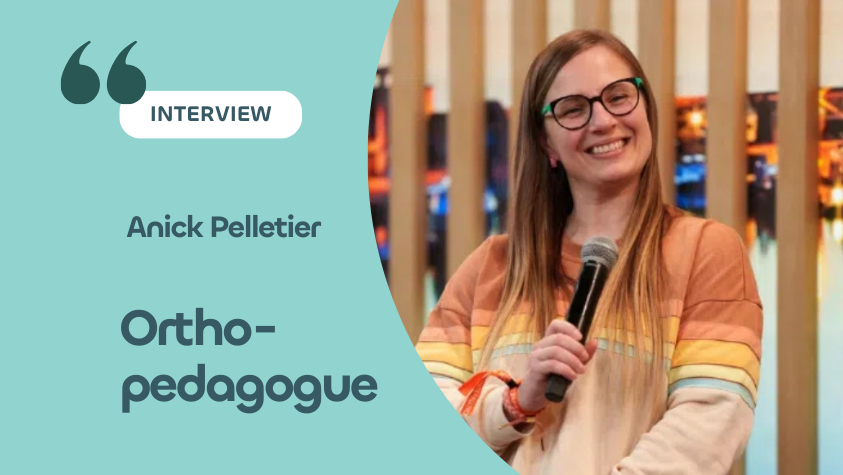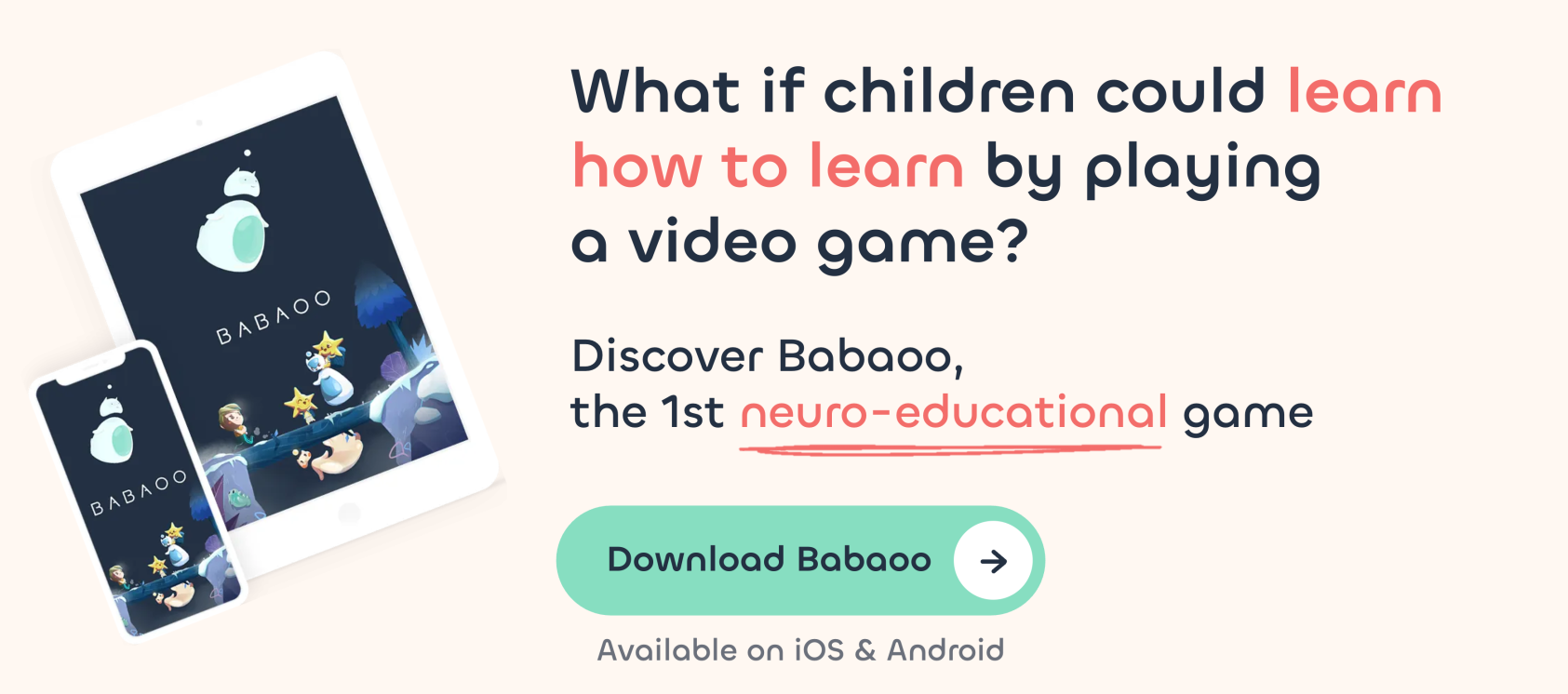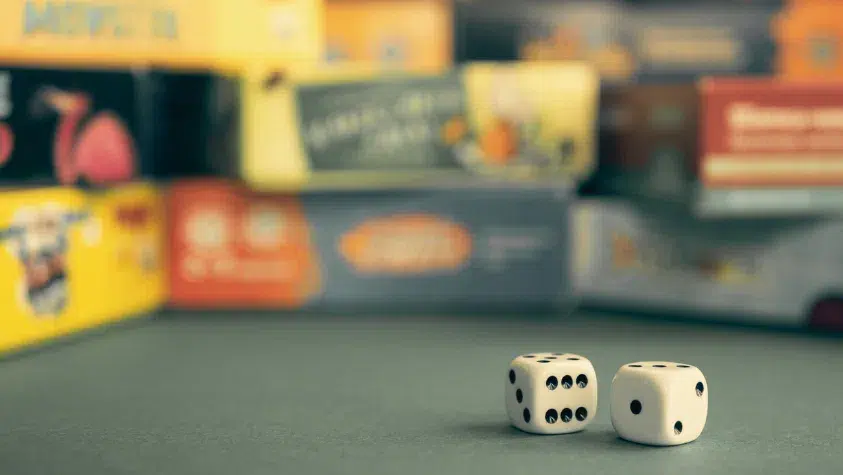
Meet Anick Pelletier, an orthopedagogue like no other!

Babaoo: Hello Anick! Can you introduce yourself in a few words?
Anick: Hello, my name is Anick Pelletier. I live on the other side of the Atlantic, in Quebec! I’ve been an orthopedagogue for over 22 years, and I’ve developed intervention techniques using board games, which led to the OptiFex pedagogy. In 2024, I joined the Babaoo Pedagogical Committee.
Would you like to explain the job of an orthopedagogue?
When I meet a child with learning difficulties, my first objective is to understand why he or she needs me. My role is to find the causes (short-term memory, attention, mental imagery, inhibition, etc.), and remedy them; or refer to another specialist if necessary.
If I’m able to act on the causes, I implement appropriate re-education strategies. For example, if the problem affects short-term memory, I’ll make the child aware of what short-term memory is, help him or her to understand its usefulness in everyday life, and use different materials and games to remedy the problem and ensure a transfer to learning. And I’ve been doing this for 22 years!
My big “cup of tea” is the 3 to 12 age group, but I also work with children aged 12 and over, with adults returning to school, at university or with students who want to be more effective in their studies. Not because they have a disorder, but because they want to be more effective in their studies, for example.
The profession of orthopedagogue is very different in France and Canada, isn’t it?
Yes, it is! In France, we more often see the orthopedagogue practicing in a private office, like a speech therapist, but there are few orthopedagogues attached to a school establishment, unlike in Canada. In Quebec, there are one or more orthopedagogues in all our schools!
Another difference: in France, the school-based speech therapist regularly deals with mathematics; whereas in Canada, it’s the remedial teacher who takes charge of this remediation!
Do you want to tell us more about your background?
I have a bachelor’s degree in special education. When I started my graduate studies in 2000, the bachelor’s degree in orthopedagogy had been “abolished”, the policy idea being to favor inclusion in the regular classroom, rather than remediation in small groups…. The idea was to train more special education teachers than remedial educators…
So I took the special education teaching course, and quickly realized that it wasn’t going to prepare me to become a remedial teacher as it had at the time. So I decided to train on my own, taking a slightly… off-piste route! (laughs) I studied learning disabilities in a Licence Professionnelle, focusing on how to remedy disorders such as dyslexia, dysorthographia, dyspraxia, executive functions and so on. That’s how I wanted to work: to be able to intervene specifically on the real needs of the pupil, to intervene at the grassroots level in order to restructure and transfer afterwards.
In special education, we intervene when students have already been experiencing difficulties for some time. I wanted to intervene before that, to understand how to prevent these difficulties and teach students the basics of their own brains.
At the time, this wasn’t really practiced, but I had the intuition to teach students the “Why” and therefore, “The Brain”. For example, if a student is having difficulties in class, is it his Attention that’s failing? But why Attention? And what exactly is Attention? I explain to him that it’s not his fault, but rather that it’s possibly due to the functioning of his Brain, in which there are neurons… In fact, we tell children everything in a very simple and popularized way! The aim is to make them aware of the different neural networks, their roles and the fact that they are malleable!
That’s how I began to introduce this method into my practice, and for around ten years, I carried out projects with public and private schools.
After having my two children, I could no longer carry out all these projects at once… I decided to devote my time to the OptiFex approach that I had already been developing for several years and to launch my own private practice with the Optineurones orthopedagogy clinic.
What is the concept of the Optineurones clinic?
The aim of the Optineurones Clinic is to support students in difficulty, both in private practice and directly in schools, through various projects, as well as providing training.
The idea is to equip students, but also to provide resources for teachers and parents. They are part of the project. They receive the same teaching as the children, because they also need to be trained to adopt a supportive posture. This is how OptiFex training came about.
What is the OptiFex approach?
The OptiFex approach aims to optimize the Executive Functions network. Initially, it was only given to students in difficulty, to offer concrete remediation, one student at a time. Gradually, I was approached by school teachers who found the approach superb and effective. After all, every child has a brain, but very few understand how neurons work! The idea was to develop this training so as to be able to deliver it in schools and train teachers in this approach, so that they could implement it as a preventive and remedial measure in their classrooms!
In concrete terms, the OptiFex approach aims to raise awareness of how the brain, neurons and neuroplasticity work, and of the importance of taking care of them through sleep, diet, managing screen time, physical activity and so on. We make children aware of the different neural networks needed to learn, to regulate their autonomy, their behaviors, their emotions… And we give them self-regulation tips. We give students experiences through board games to make them aware of their Executive Functions in action, in a playful way.
Teachers have access to content in the form of teaching capsules, checklists, transfer videos and Optifex graphics. Each function has its own capsule, as do brains, neurons and hygiene. Once the capsules have been listened to in class, the students’ parents can access them to put them into practice at home.
For its part, the board game enables students to become aware of their level of self-regulation and to practice techniques for improvement. In a few words, the OptiFex approach is awareness through teaching and experience through board games.
Thanks to OptiFex, I’m also involved in other research projects, such as the “JEuMETACOGITE” research project, and I’m a regular speaker on subjects linked to Executive Functions, brain function and the use of board games in teaching.
And so the board game medium is used for diagnosis AND remediation?
Yes, the game is used for purely qualitative observation, but I also use it mainly for remediation. When we’re in the observation phase, the aim is to let the students explore and learn to play without immediately teaching them regulation tricks. However, at the end of the game, we’ll discuss together: did the child use certain neurons more than others? Were some functions used more than others? What tricks did the student use to succeed in the game? In short, we provide feedback on the experience.
Students also have access to a video explaining the game, which simply presents the rules. If they wish, they have access to a second video: it’s Madame Anick giving self-regulation tips using the same game! It’s an extra help. The aim is for them to become functional, adequate with themselves, others, at work, in society, etc. There’s no such thing as executive perfection. There’s no such thing as executive perfection!
We use play to observe, because the Executive Functions observe each other! We use games because they’re fun, and when well-chosen, they help to open up the affective side. The aim is to enjoy the game, and if they don’t like it, we try to understand why and choose another game. We get the students involved in finding the games, and they love it!
What got you interested in board games?
Ah, that’s a rather zany answer (laughs). “I fell in love with board games when I was a little girl…” My mum Maryse bathed me in the world of board games. My mom Maryse bathed me in this world, and I was lucky enough to have that. In our street, all the moms bought games once a year, then exchanged them with each other for the rest of the year. It was great! We’d play with a game for a month, then it would go to a neighbor. So if I wanted to play the game again, I’d have to go over to his place and play it again! It ended up creating a community on the street, which was fantastic! We spent our childhood playing together with our street friends. That’s how I got to know a lot of games.
When I started teaching, I often had the idea of using games to convey certain concepts. That’s how I incorporated them into my teaching methods: I naturally made the link between games and cognitive actions.
In the early days, I used to go into stores, and the owners were great: they’d let me spend hours dissecting new games and classifying them. It’s been 22 years since I’ve been maintaining several lists which are freely accessible on the Optineurones Clinic website. There are lists of games for math, French, Executive Functions and so on.
And then, what are your favorite games?
-
- Panic Lab : ideal for working on short-term memory.
- Slack Jack : a game to regulate impulsivity for inhibition.
- Go pop presto : useful for emotional regulation.
- Quarto : a game of planning and organization in the form of tic-tac-toe that calls on all the Executive Functions.
- A thousand titles : for learning to make associations with old neurons and stimulating memory.
- Box monster : a game that stimulates mental imagery, as you have to touch to find images.
- Slide Quest : useful for encouraging cooperation and therefore flexibility: win together or lose together!
- Jooky Jooky : a game to stimulate attention and attentional focus
- And finally, the game Kites which stimulates all Executive Functions! It’s a collective game that requires speed, at the right moment. Attention, Activation and Working Memory are all in high demand!
Did you develop your own board games?
Yes, of course I have! Slack Jack is one of my games. I also created the game “In My Suitcase” to observe how a learner stores information in memory and teach memory organization and retrieval strategies.
“Imagined Numbers” is a game for teaching numbers pictorially. For example, the number “6” is made into a “sausage”, the number “7” into a “fart”, and so on. This makes the children laugh, and at the same time helps them memorize more easily.
At the moment, we’re working on the creation of an OptiFex Collection. It sometimes happens that a game we use is no longer published, so we have to keep changing games. I’d like to develop an “OptiFex” Collection to stabilize and make more easily accessible the games offered to accompany the approach. And who knows, why not relaunch some games that are no longer published!
How would the Collection work?
The idea of the OptiFex Collection would be to be a turnkey toolbox for teachers. For every need – when teaching emotional regulation, for example – there would be a corresponding game. In the classroom, everything moves very fast: integrating the functioning of the Brain and Executive Functions on top of the school curriculum can be difficult at first, especially if you’ve never done it before. This Collection would be a useful tool.
We’re also planning a series of children’s books for the very young, and a TV series I’m working on to introduce Executive Functions. Lots of projects in the pipeline!
My aim is also to provide parents with the best possible tools. I meet a lot of them, and I realize that they need support. Children are less and less executive, as we’ve seen over the last ten years or so…
Do you have an explanation for this phenomenon? Why are children less “executive”?
It’s multi-factorial and global. But I’d say that I’m able to name, by repeated observation, that screens can play an important role in it: video games, television, the internet, social networks… Having a video in your hands and being passive while secreting dopamine without any activation, doesn’t help the development of the Activation and Attention circuits in an autonomous way. It has been observed that the longer a child is left in front of a screen, with no control over content, container or duration, the more his or her Executive Functions are affected. Studies corroborate this, but we also see it in the field.
When a child reaches school age in Quebec, he or she is generally around 5 years old. That’s already late to pick up on certain well-established brain habits. If this child has spent three years consuming screens without control, he may arrive in class with difficulty in mobilizing his attention and sustaining it on an objective that is compulsory and not “dopamine” for him, in activating himself, in inhibiting himself, and so on. What we’re seeing on this generational wave underlines the need to limit screen time and adopt good digital hygiene. You can play, but you can’t overconsume. We instill this idea in children: consume in a balanced way, without banning screens.
In OptiFex teaching, this is one of the first lessons: we learn how the brain works, how neurons develop and then we teach that these neurons are optimized with myelin, which in turn develops with good sleep. And to get a good night’s sleep, you ideally shouldn’t consume screens two hours before bedtime.
By raising awareness, we raise questions among children and parents, and some of them change their consumption habits.
Speaking of video games, what do you think of Babaoo?
The principle behind Babaoo educational video game, caught my attention very quickly. The first time I tried it out, it immediately reminded me of some of the board games I play with schoolchildren: the children are active and interact to make the game world move!
My background is in games, not necessarily video games, but I think our expertise can complement Babaoo’s objective: to make children aware of what’s going on in their brains and their everyday lives.
Do you have any advice for teachers looking for ways to help their students pay more attention?
Yes, of course. Don’t hesitate to explain to students that some of them may find it harder to focus their “neural electricity” on one thing at a time.
In the classroom, teachers can also provide tools to help students concentrate and prevent their attention from wandering. For example, they can put things like noise-cancelling headphones in a basket, an MP3 music player with quiet music chosen by the teacher, take “neural breaks”, move around and come back to work in a different place, etc. In this way, the child can focus on one thing at a time. In this way, children can choose the means that best help them to inhibit external distractions and concentrate better.
The idea is to play down the fact of having trouble with attention, to make them aware of it, and to make students more aware of the subject. It’s normal, and it happens! It shouldn’t be a taboo subject. It’s essential to let children choose how to manage their Attention, rather than imposing a method on them.
What drives you in your job?
Helping people! It’s something that nourishes me deeply. I literally need to help people understand and solve problems, without judgment. My true desire is to inform human beings and help them become better. 😇
Thank you Anick for this exchange! To find out more about Anick’s OptiFex method, visit the Optineurones website.
You may also be interested in these articles



